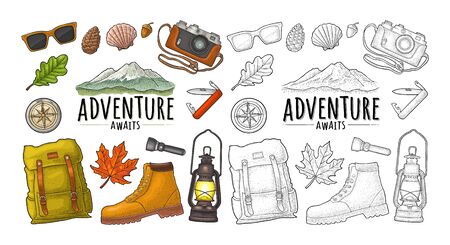Introduction: Journey into the Heart of Mesa Verde
If you’re ready to step back in time and experience the raw, untamed heart of America’s ancient Southwest, Mesa Verde National Park is where your adventure begins. Perched high in the arid plateaus of southwestern Colorado, Mesa Verde stands as a living testament to the ingenuity and resilience of the Ancestral Puebloan people. This is not just another national park—it’s an archaeological fortress, cradling over 700 years of human history within its labyrinthine cliff dwellings, ceremonial kivas, and sunbaked trails. The park was established in 1906 specifically to preserve these remarkable cliffside communities, making it a crown jewel for both cultural preservationists and hardcore outdoor enthusiasts.
Mesa Verde—Spanish for “Green Table”—is more than a name; it’s a geographic reality, with vast mesas blanketed by juniper and pinyon pine, sliced through by rugged canyons. Here, you’ll find an unparalleled collection of stone villages built into sheer sandstone cliffs—iconic structures like Cliff Palace and Balcony House that have survived centuries of storms and solitude. These are not relics to be idly admired from afar; they are living classrooms, offering critical lessons about adaptation, survival, and community engineering in one of North America’s harshest environments.
For those who seek more than passive observation, Mesa Verde delivers. Its network of hiking trails weaves through scrubland and canyon rim, guiding you into the very spaces where ancient families cooked, worked, and worshipped. Every step here connects you with the enduring spirit of the Ancestral Puebloans—a culture that thrived against all odds before vanishing into the pages of history. So lace up your boots and prepare to explore: this journey into the heart of Mesa Verde isn’t just about sightseeing—it’s about survival, legacy, and unlocking the secrets written in stone.
2. Uncovering Ancient Engineering: The Cliff Dwellings
When you step into Mesa Verde, you’re not just looking at old rocks—you’re walking through a masterclass in ancient engineering. The Ancestral Puebloans, also known as the Anasazi, carved their homes directly into the sandstone cliffs of the Southwest, turning the canyon walls themselves into shelter. Built between 600 and 1300 AD, these dwellings are jaw-dropping feats of ingenuity that still challenge modern understanding.
Cliff Dwelling Construction: No Power Tools Needed
Imagine building multi-story apartments without steel, concrete, or electricity. The Puebloans used hand tools made from stone, bone, and wood to shape sandstone blocks. They assembled walls using mud mortar—basic but incredibly durable. Roofs were crafted from timber beams called vigas, layered with brush and packed earth for insulation against brutal summer heat and frigid winter nights. These dwellings weren’t random; they were strategically positioned under rock overhangs for natural weather protection.
Structural Features Table
| Feature | Material | Purpose |
|---|---|---|
| Walls | Sandstone & Mud Mortar | Structural Support & Insulation |
| Roofs (Vigas) | Pine/Juniper Wood & Earth | Weather Protection & Load-Bearing |
| Kivas | Masonry & Timber | Ceremonial/Community Use |
| Ladders & Doorways | Wood Poles & Carved Stone | Access Between Levels/Security |
The Layout: More Than Just Shelter
Mesa Verde’s cliff dwellings were compact cities, not just caves. Each site included living quarters, food storage rooms, and kivas—circular ceremonial chambers built underground for spiritual gatherings and community meetings. Doorways were intentionally small to keep out cold winds and potential intruders. Water had to be carried up by hand or collected from seeps in the cliffs—a daily grind demanding grit and teamwork.
A Day in Cliff Dweller Life: Survival Tactics 101
The average day was no cakewalk. Residents woke before dawn to tend crops on the mesa top, then navigated narrow hand-and-toe holds in the cliff face to haul water or gather firewood. Food was stored in sealed rooms to keep out rodents and spoilage. Communal spaces like kivas fostered tight social bonds and offered refuge during harsh weather or times of conflict. Every aspect of life revolved around survival—if you didn’t work together, you didn’t make it through the season.

3. Hiking Trails: Trekking Through Time
When you lace up your boots in Mesa Verde National Park, you’re stepping onto a landscape that fuses rugged adventure with ancient history. The park’s hiking trails aren’t just dirt paths—they’re time machines leading you through the echoes of the Ancestral Puebloan civilization and the wild heart of the American Southwest.
Overview of Top Trails
Petroglyph Point Trail
This 2.4-mile loop is a hardcore favorite, skirting cliff edges and dropping you right into a gallery of ancient rock art. Expect narrow passages, stone stairways, and panoramic canyon views—a true test for your legs and your respect for history.
Spruce Canyon Trail
If you want to escape the crowds and chase solitude, this 2.4-mile trail drops steeply into a cool, shaded canyon. It’s less trafficked, so keep your senses sharp for wildlife and changing weather conditions. Watch your footing—rocky sections are unforgiving.
Point Lookout Trail
For those who crave big vistas, this 2.2-mile roundtrip climb delivers killer views over Montezuma Valley and beyond. The elevation gain will get your heart pumping, but the payoff at the top is worth every step.
Safety Tips for All Hikers
Beginner Advice
Start early to beat the desert heat and pack more water than you think you’ll need—it’s easy to underestimate how dry it gets out here. Stick to marked trails; venturing off not only threatens fragile archaeological sites but can also leave you disoriented fast.
For Seasoned Hikers
If you’ve got backcountry experience, Mesa Verde rewards your grit with rugged terrain and rare glimpses into centuries-old structures tucked off the beaten path. But don’t let confidence breed carelessness—flash floods, loose rocks, and sudden storms are all real threats. Always check in at the visitor center for trail conditions and closures before heading out.
Tread Lightly—Respect the Past
The ancient dwellings and petroglyphs are irreplaceable links to America’s past. Treat them with reverence: stay on designated paths, never touch or disturb ruins, and leave no trace behind. Hiking in Mesa Verde isn’t just about conquering miles—it’s about honoring those who carved their stories into these cliffs long before us.
4. Respect, Preservation, and Park Regulations
When you set foot in Mesa Verde National Park, you’re entering ground that’s more than just a hiking destination—it’s sacred ancestral territory and a living classroom for American stewardship values. Respect for the land and its ancient inhabitants isn’t just a suggestion here; it’s your duty as a visitor. Responsible tourism is not only about following rules but also about ensuring that these irreplaceable cliff dwellings and trails remain intact for generations to come.
Understanding Stewardship: The American Way
American stewardship is rooted in the principle that public lands are a collective inheritance. It’s about balancing access with preservation—leaving no trace, respecting wildlife, and honoring sites that hold deep historical and cultural meaning. At Mesa Verde, this means walking softly, staying on marked trails, and keeping your hands off ancient masonry. The Ancestral Puebloans built these structures over 700 years ago; it only takes seconds of carelessness to undo centuries of history.
Essential Park Regulations: What You Need to Know
| Regulation | Reason | Consequence of Violation |
|---|---|---|
| Stay on designated trails | Prevents erosion & protects sensitive archeological features | Fines or removal from park |
| No climbing or touching ruins | Preserves fragile stonework & prevents irreversible damage | Citation, possible ban from future visits |
| No collecting artifacts (rocks, pottery, plants) | Keeps the archeological record intact for research and education | Federal penalties under the Antiquities Act |
| Respect wildlife and keep food secured | Protects native species and prevents habituation to humans | Warnings or fines, risk to wildlife populations |
| No graffiti or marking surfaces | Ensures authenticity and respect for sacred spaces | Criminal charges, permanent damage to heritage sites |
Why This Matters: Protecting Heritage for the Next Generation
If you want your kids—or anyone’s kids—to experience Mesa Verde as you see it today, it’s critical to follow every rule and uphold every value. Every broken rule chips away at a legacy that’s thousands of years old. Responsible hiking and visitation don’t just protect the past—they guarantee a future where Americans can connect with their roots, learn survival skills from ancient ingenuity, and marvel at the endurance of human spirit carved into stone.
5. Essential Survival Tips for the High Desert
Stay Hydrated Like Your Life Depends On It
Mesa Verdes high desert climate is unforgiving. The air is dry, and dehydration sneaks up on even seasoned hikers. Carry at least one gallon of water per person per day—no exceptions. Don’t rely on springs or streams; most are seasonal or contaminated. Use a hydration reservoir for hands-free sipping, and add electrolytes to your water if you’re hiking in peak summer months. Thirst means you’re already behind—sip regularly, don’t wait.
Respect the Weather—It Can Turn on a Dime
Weather at Mesa Verde can flip from blazing sun to sudden thunderstorms or high winds with little warning. Mornings may be cool, but afternoons can spike above 90°F. Always pack a lightweight, breathable long-sleeve shirt and a rain shell, even if the forecast looks clear. Watch the sky—if thunderheads build, get off exposed ridges and cliff edges immediately. Lightning is a real threat on the mesa tops.
Navigation: Don’t Just Trust Your Phone
Signal is spotty across most trails and cliff dwellings. Bring a paper map of Mesa Verde National Park and know how to use it. Mark key landmarks before heading out. A compass or GPS unit (with extra batteries) isn’t overkill; it’s smart. Let someone know your route and expected return time—rescue operations are slow in this rugged backcountry.
Be Prepared for Emergencies
Packing a basic first-aid kit is non-negotiable: bandages, antiseptic wipes, tweezers, moleskin for blisters, and an emergency whistle. Throw in a headlamp with fresh batteries—even if you plan to finish well before dark. Snake encounters are rare but possible; watch where you step and avoid reaching blindly into crevices near dwellings.
Respect the Ancient Terrain
The ancestral Puebloans thrived here by reading the land and respecting its limits—you should do the same. Stay on marked trails to avoid unstable surfaces and preserve delicate archaeological sites. Cliff edges are crumbly; keep back from overhangs and never attempt to climb ruins.
Pro Tip: The Buddy System Isn’t Just for Kids
If possible, hike with a partner. If soloing Mesa Verde’s backcountry, double down on all safety measures—and always check in with park rangers before setting out. When you’re prepared, you’ll experience the wonders of Mesa Verde as both an adventurer and a steward of its ancient heritage.
6. Planning Your Mesa Verde Adventure
When to Visit: Timing is Everything
If you want the full Mesa Verde experience, plan your trip between late spring and early fall (May through October). That’s when all the cliff dwellings are open and ranger-guided tours are running strong. Summer brings bigger crowds and hotter temps, but also the most daylight for hiking and exploring. For fewer people and cooler weather, late September into early October is prime time—just keep an eye on early snow in higher elevations.
What to Pack: Gear Up for Survival and Comfort
Packing smart here isn’t just about comfort—it’s about safety. Bring sturdy hiking boots with solid tread (the trails and ladders can be rough), a wide-brimmed hat, sunglasses, and sunscreen to battle relentless high-altitude sun. Water is mission-critical; pack more than you think you’ll need (at least 2 liters per person for half-day hikes). Toss in high-energy snacks, a light rain jacket, a first-aid kit, and layers for unpredictable mountain weather. If you’re camping or road tripping, don’t forget backup power sources and a reliable map—cell service is spotty at best.
Permits and Guided Tours: Know Before You Go
The crown jewels of Mesa Verde—the major cliff dwellings like Cliff Palace, Balcony House, and Long House—require tickets for ranger-led tours. These often sell out quickly during peak season, so book your tickets online as soon as reservations open (usually several weeks in advance). Park entrance fees are standard for national parks; have your America the Beautiful Pass ready if you’ve got one. If you’re itching to explore less-visited sites or want deeper insight into Ancestral Puebloan culture, consider booking a specialty guided tour offered by local outfitters.
Maximizing Your All-American Road Trip
Mesa Verde is a road-tripper’s dream—a rugged detour right off Highway 160 in southwest Colorado. Build your route to hit other legendary stops like Four Corners Monument or Durango’s historic railroad. Inside the park, expect winding mountain roads with tight switchbacks. Fill up on gas before entering; there’s no fuel available inside. Make reservations early if you want to stay at Morefield Campground or Far View Lodge—they fill up fast during summer. Want a true American adventure? Bring your own camping gear and cook out under the stars after a day of exploring ancient ruins.
Pro Tips from the Field
Start your days early to beat the heat and crowds on both trails and tours. Always check for fire restrictions or trail closures before heading out—conditions change fast in these wildlands. And don’t forget your sense of wonder: walking where Ancestral Puebloans once thrived is a rare privilege that deserves respect—and preparation worthy of any American explorer.


